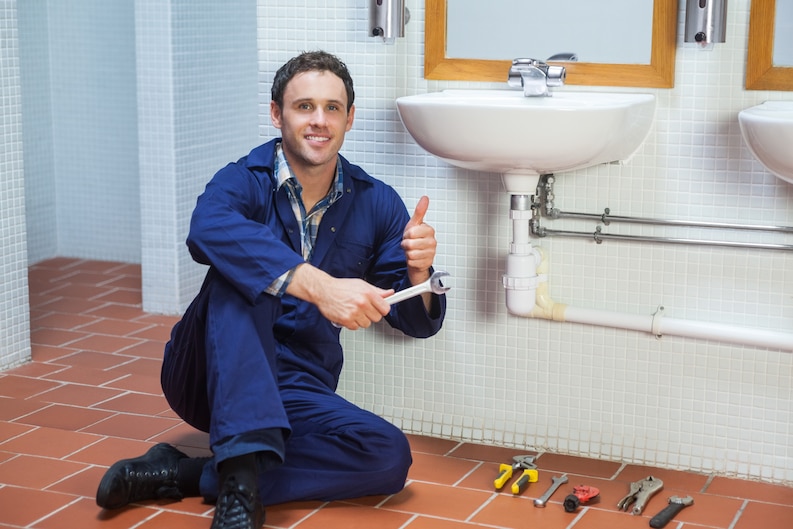
Have you ever found yourself ankle-deep in water, desperately trying to stop a gushing pipe, and wondering why plumbing emergencies always strike at the most inconvenient times? Fear not, my friends, for I have gathered the wisdom and secrets of plumbing experts to share with you today.
In this blog post, we will delve into the art of handling plumbing emergencies like a pro. Whether you’re faced with a burst pipe, a clogged toilet, or a malfunctioning water heater, this guide will equip you with the skills and knowledge to tackle any plumbing nightmare. So, grab your wrench and join me on this journey to plumbing heroism!
Step 1: Shut Off Your Water
Plumbing emergencies range from burst pipes and overflowing toilets to leaking faucets and malfunctioning water heaters. No matter the nature of the emergency, shutting off the water supply is a critical step to prevent further damage. Water can cause extensive harm to your home’s structure, leading to costly repairs and potential health hazards such as mold growth. You can minimize these risks and protect your property by shutting off the water promptly.
If you cannot find the specific valve supplying water to the problem area, it is best to turn off the water supply to your entire home. This will stop any flow of water and prevent further damage. Locate the main shut-off valve and turn it clockwise (or to the right) until fully closed. This will effectively shut off the water supply to your entire property.
Handling plumbing emergencies requires quick thinking and decisive action. Shutting off your water supply is crucial to minimizing damage and protecting your home.
Step 2: Turn Off Your Water Heater
When a plumbing emergency occurs, water can quickly flood your home, causing extensive damage to walls, floors, and furniture. By turning off your water heater, you can stop the hot water supply to the affected area, reducing the risk of additional damage. This step is particularly crucial if the emergency involves a burst pipe or a major leak.
Depending on the nature of the plumbing emergency, leaving your water heater on could damage the system. For example, a sudden drop in water pressure due to a burst pipe can lead to overheating in the water heater, potentially causing it to malfunction or even rupture. By turning off your water heater, you can safeguard it from unnecessary stress and potentially costly repairs.
Step 3: Empty Your Pipes
Before emptying your pipes, turning off the water supply is important. Locate the main water valve in your home and ensure it is fully closed. This will prevent any additional water from entering your plumbing system.
Once you’ve shut off the water supply, open all the drains and fixtures in your home. This includes sinks, showers, bathtubs, and toilets. Doing so allows the water trapped in your pipes to escape.
In addition to indoor drains, it’s crucial to remember any outdoor fixtures you may have. These are often overlooked but can cause significant damage if not properly emptied. Open them to release any remaining water.
Emptying your pipes effectively reduces the risk of water damage and potential pipe bursts during a plumbing emergency. This preventive measure is especially crucial during colder months when pipes are more prone to freezing and bursting.

Step 4: Assess the Damage
When faced with a plumbing emergency, acting swiftly and assessing the damage as soon as possible is crucial. After turning off the water supply and ensuring that all spigots and faucets are cleared out, the next step is to carefully evaluate the situation and locate the root cause of the problem. This allows you to understand the extent of the damage but also helps your emergency plumber diagnose the issue effectively. Moreover, promptly assessing and documenting the water damage can prove beneficial when reporting the incident to your insurance company.
To begin the assessment, meticulously inspect your surroundings for signs of water damage. Look out for any new moisture marks, which could indicate the presence of an active leak or water seepage. Pay attention to the flooring; warped surfaces can often be a telltale sign of water damage. Additionally, observe the walls and ceilings for any signs of peeling or blistering paint, as this can indicate water intrusion.
By thoroughly examining your property, you will be able to determine the extent of the plumbing emergency and understand the severity of the damage. This information is vital for your emergency plumber, as it helps them better comprehend the situation and devise an appropriate repair plan. Hire a plumber in Norway via Rørlegger Sætre.
Step 5: Call for an Emergency Plumber
Plumbing emergencies can be stressful and overwhelming, especially when you’re faced with a large leak that seems beyond your DIY skills. In such situations, acting swiftly and calling for an emergency plumber who can provide the expertise and quick response needed to resolve the issue effectively is crucial. By providing your plumber with essential information beforehand, you can help them better understand the problem and ensure a smoother resolution.
Calling an emergency plumber provides numerous benefits that can make a significant difference in resolving plumbing emergencies effectively. Emergency plumbers are trained professionals with extensive knowledge in handling various plumbing issues. They have the skills and experience to diagnose the problem and quickly implement the most suitable solution.
Conclusion
We have explored invaluable tips and tricks to handle plumbing emergencies like a seasoned professional. From burst pipes to clogged toilets, this comprehensive guide has empowered you with the necessary skills and knowledge to tackle any plumbing nightmare that may come your way effectively.
By taking a proactive approach and arming yourself with the right tools, you will be well-prepared to handle even the most inconvenient plumbing emergencies. So, embrace the role of a plumbing hero and confidently face any challenge with this guide’s help. Remember, with determination and the wisdom shared here, you can conquer any plumbing emergency that crosses your path.

